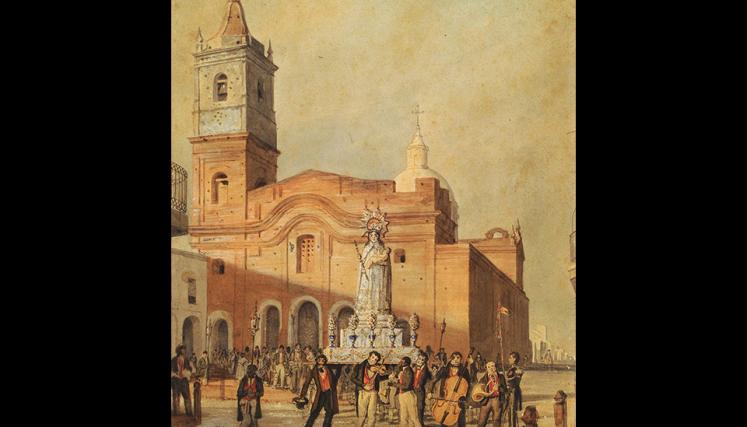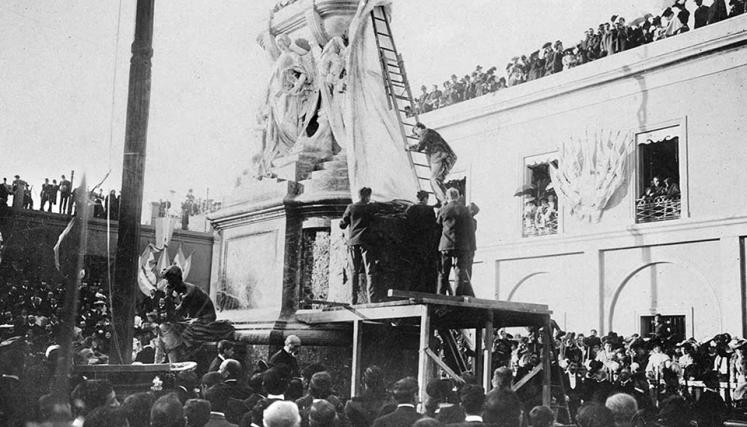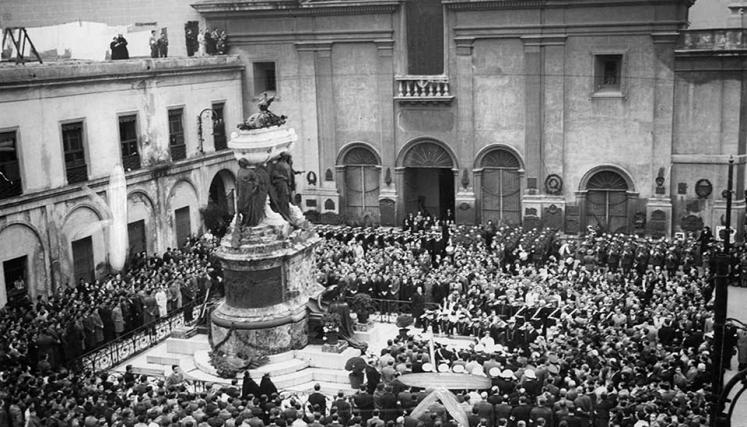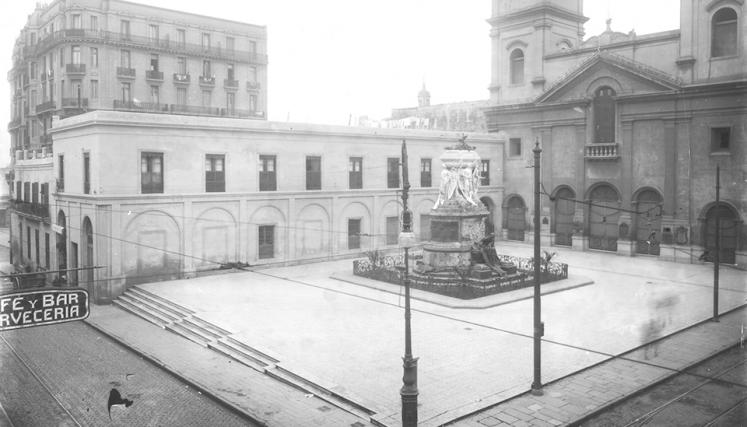¡Escuchá esta historia!
Este predio fue ocupado por la orden de los dominicos desde el 1600 y los edificios actuales fueron construidos entre los años 1751 y 1856.
El edificio fue testigo de las dos invasiones inglesas a Buenos Aires, en los años 1806 y 1807. En la torre izquierda de la iglesia, se pueden ver unas marcas que recuerdan los balazos realizados por la resistencia porteña a los soldados ingleses que se habían atrincherado allí. ¿Sabías que si entrás a la iglesia, al fondo de la nave lateral izquierda, vas a poder ver las banderas inglesas que Santiago de Liniers tomó al recuperar la ciudad en 1806? ¡También hay banderas de las batallas de la independencia donadas por Manuel Belgrano!
En el atrio, esa especie de “patio” al frente de la iglesia, se encuentra el mausoleo del General Manuel Belgrano, uno de los principales patriotas de la Revolución de Mayo, la Independencia y creador de la Bandera Argentina, que nació a pocos metros de esta iglesia y formaba parte de la orden de los dominicos como terciario.
Si nos detenemos en el conjunto monumental y escultórico del mausoleo. Abajo de todo, en el basamento, se pueden ver dos figuras alegóricas que son “el pensador” y “la acción”. En el nivel intermedio hay dos relieves que representan el juramento a la bandera y las batallas de Belgrano en Tucumán y Salta. Sosteniendo el sarcófago hay cuatro ángeles. Uno sostiene una espada, simbolizando la justicia y la vida militar de Belgrano; uno sostiene un engranaje, representando la industria; otro sostiene una hoja de palma apuntando hacia abajo, simbolizando la humildad en la victoria y, por último, uno sostiene una cinta con la leyenda “La Educación”, conmemorando la donación del dinero recibido por Belgrano por sus batallas para la construcción de escuelas en el norte del país y Bolivia
You are in the complex formed by the Santo Domingo Convent and the Nuestra Señora del Rosario Basilica.
The building witnessed the two English invasions of Buenos Aires, in 1806 and 1807. If you look at the left tower of the church you will see some marks that recall the bullets fired by the Buenos Aires resistance at the English soldiers who had barricaded themselves there. Did you know that if you enter the church, at the back of the left aisle, you will see the English flags that Santiago de Liniers took when he recovered the city in 1806? There are also flags from the battles of independence donated by Manuel Belgrano!
In the atrium, that kind of "patio" in front of the church, you will find the mausoleum of General Manuel Belgrano, one of the main patriots of the May Revolution, the Independence and creator of the Argentine Flag.
Take a close look at the monumental and sculptural ensemble of the mausoleum. Let's go through it from bottom to top. In the base you can see two allegorical figures that are "the thinker" and "the action". In the intermediate level there are two bas-relieves that represent the oath to the flag and Belgrano's battles in Tucumán and Salta. Holding the sarcophagus there are four angels, you will see that one holds a sword, symbolizing justice and Belgrano's military life; another holds a gear, depicting industry; another holds a palm leaf pointing down, symbolizing humility in victory and, finally, another holds a ribbon with the legend "Education", commemorating the donation of the money received by Belgrano for his battles for the building of schools in the north of the country and Bolivia.
Look for the QR codes on buildings and public spaces in the historic center and keep discovering its history!





